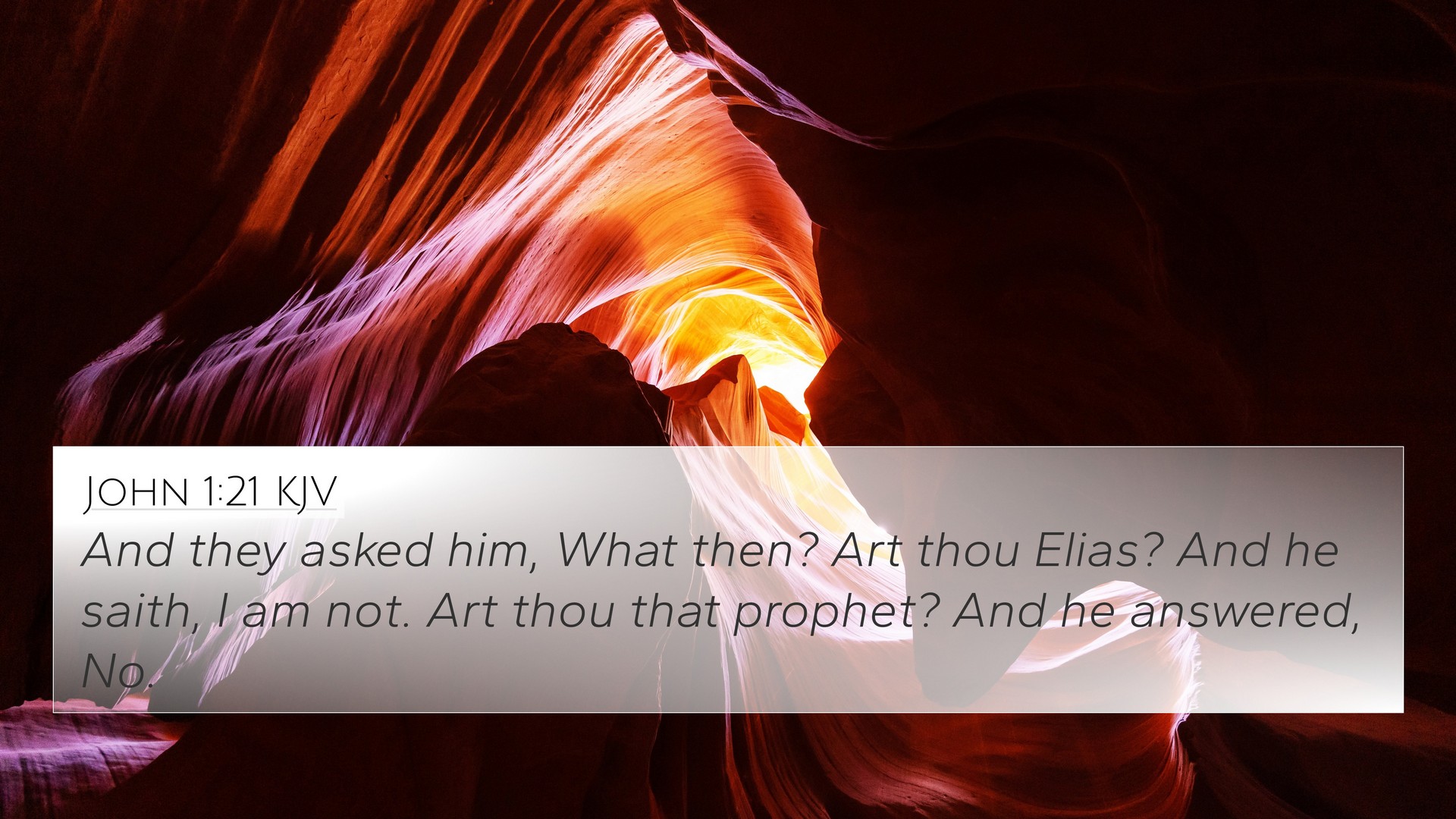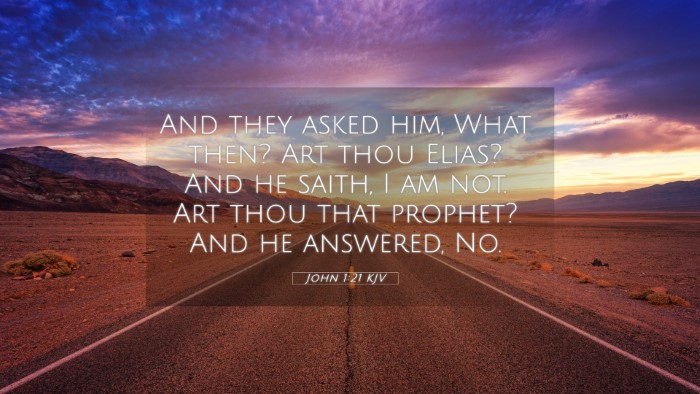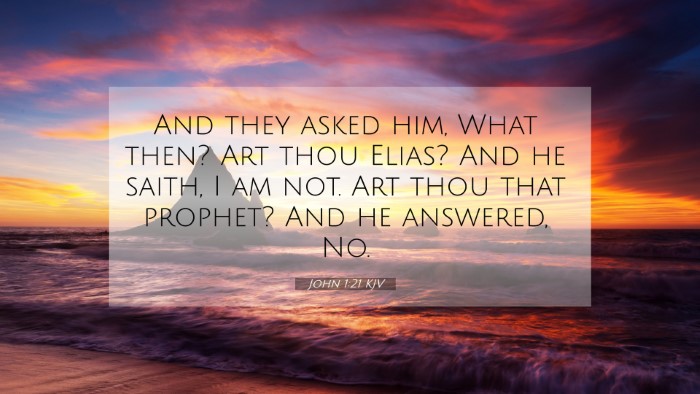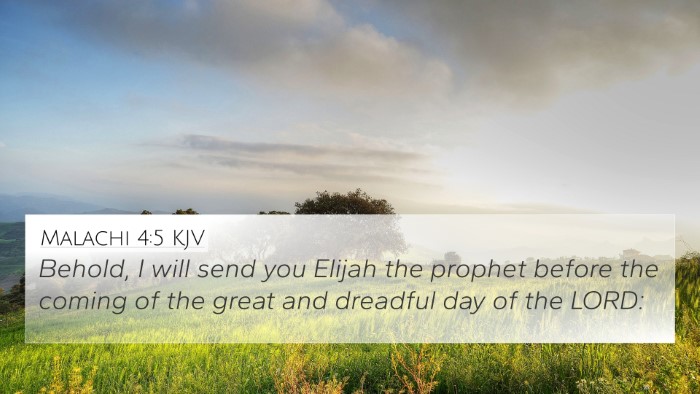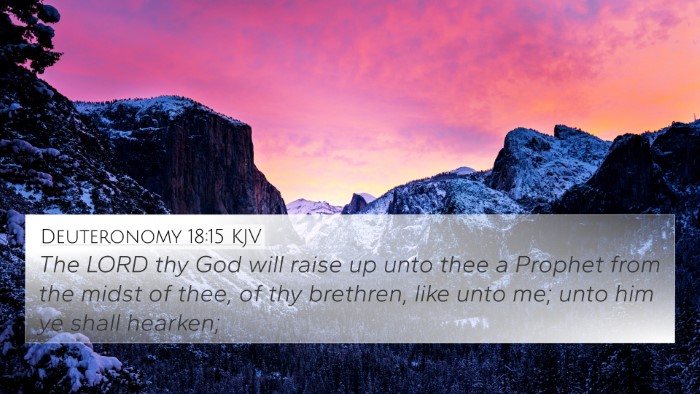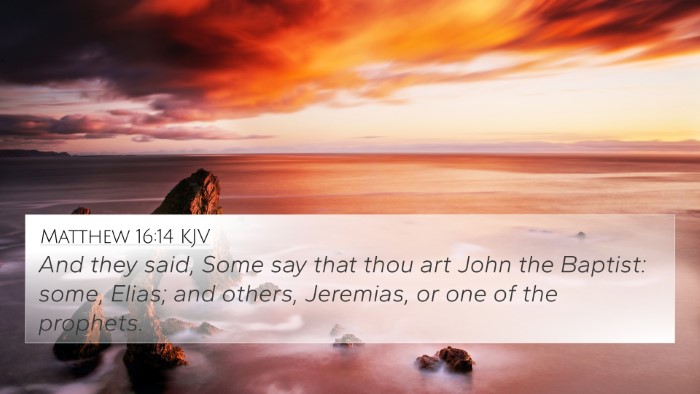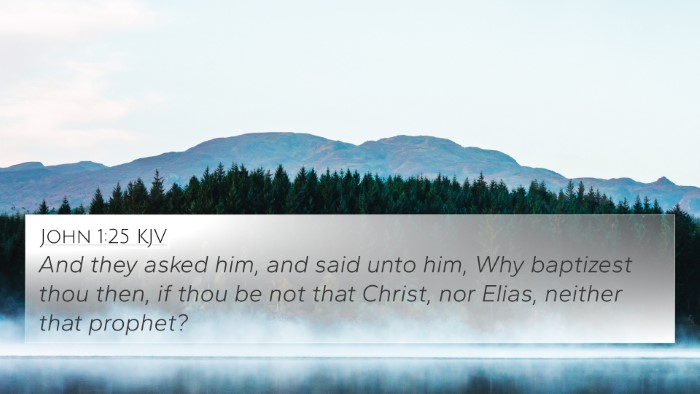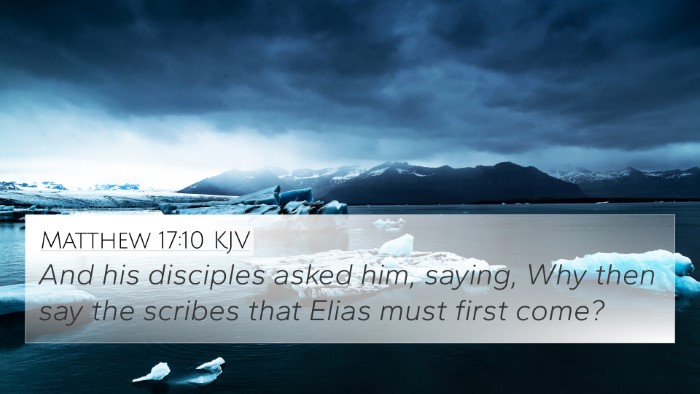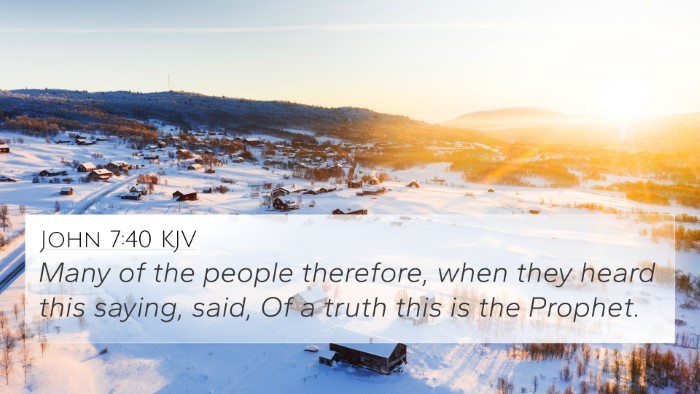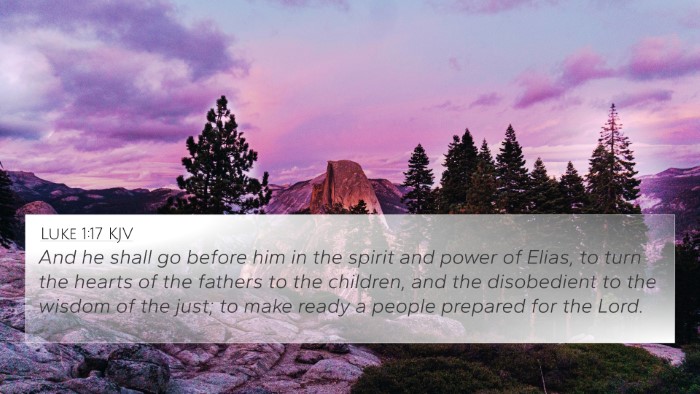Understanding John 1:21
John 1:21 is a significant verse in the Gospel of John, where the question of Jesus' identity arises prominently. The passage reads:
"And they asked him, What then? Art thou Elias? And he saith, I am not. Art thou that prophet? And he answered, No."
Context and Meaning
This text captures a pivotal moment during the ministry of John the Baptist. As he proclaims the coming of Jesus, spiritual leaders and seekers are eager to understand who he is. This verse highlights John's role in relation to prophetic fulfillment and his own refusal to claim titles that belong to others.
Key Insights from Public Domain Commentaries
- Matthew Henry: John the Baptist, declaring his mission, clarifies that he is not Elijah returned, nor "that prophet" foretold in Deuteronomy 18:15. His purpose was to prepare the way for the Lord, not to establish himself as a key prophet.
- Albert Barnes: The inquiries posed to John reflect Jewish expectations of messianic figures. His denials illustrate both humility and focus on his mission—pointing to Christ rather than himself.
- Adam Clarke: The mention of "that prophet" resonates with Jewish tradition, hinting at accumulated prophecies about a coming figure. John’s acute awareness of his identity shows his theological depth and commitment to truth.
Cross-References
To deepen our understanding of John 1:21, we can explore several related verses:
- Malachi 4:5: "Behold, I will send you Elijah the prophet before the coming of the great and dreadful day of the Lord." — Indicates the expectation of Elijah's return.
- Deuteronomy 18:15: "The Lord thy God will raise up unto thee a Prophet from the midst of thee, of thy brethren, like unto me; unto him ye shall hearken." — Connects to the anticipation of a prophet like Moses.
- Matthew 11:14: "And if ye will receive it, this is Elias, which was for to come." — This verse highlights the ambiguity surrounding John’s role in prophetic lineage.
- Isaiah 40:3: "The voice of him that crieth in the wilderness, Prepare ye the way of the Lord..." — This prophetic call underpins John's mission to prepare the people for Jesus.
- John 3:28: "Ye yourselves bear me witness, that I said, I am not the Christ, but that I am sent before him." — Affirms John’s awareness of his mission's distinct nature.
- John 5:33-35: "Ye sent unto John, and he bare witness unto the truth... he was a burning and shining light..." — John as a witness underscores his role, aligning with his denials in John 1:21.
- Acts 3:22: "For Moses truly said unto the fathers, A prophet shall the Lord your God raise up unto you..." — Continues the theme of prophetic expectation that John was navigating.
Thematic Connections
This verse establishes a framework for thematic connections throughout the New Testament. John's humility and clarity in his non-identity expand our comprehension of prophetic roles:
- Comparative Bible verse analysis: Examining how John’s responses align with the teachings of Jesus and the Apostles sheds light on the nature of prophetic authority.
- Bible verses that relate to each other: This verse can be linked with the subsequent recognition of Jesus' true identity, illuminating the progression of revelation in the Gospel.
- Linking Bible scriptures: The connections between the Old Testament prophecies and the New Testament fulfillments found in these exchanges provide deeper insight into the significance of both covenants.
Tools for Bible Cross-Referencing
To effectively explore these connections, Bible study tools can enhance understanding:
- Bible concordance — For identifying specific verses related to themes like prophecy.
- Bible cross-reference guide — Helps in navigating various scriptures that elucidate similar messages.
- Cross-reference Bible study methods — Incorporates both thematic and contextual analyses for enriched understanding.
Conclusion
John 1:21 serves as a foundational verse that exemplifies the significance of identity and ministry within the framework of prophetic expectation. By analyzing related scriptures and employing cross-referencing techniques, students and seekers of the Word can cultivate a deeper grasp of scriptural meanings and their interconnections.
